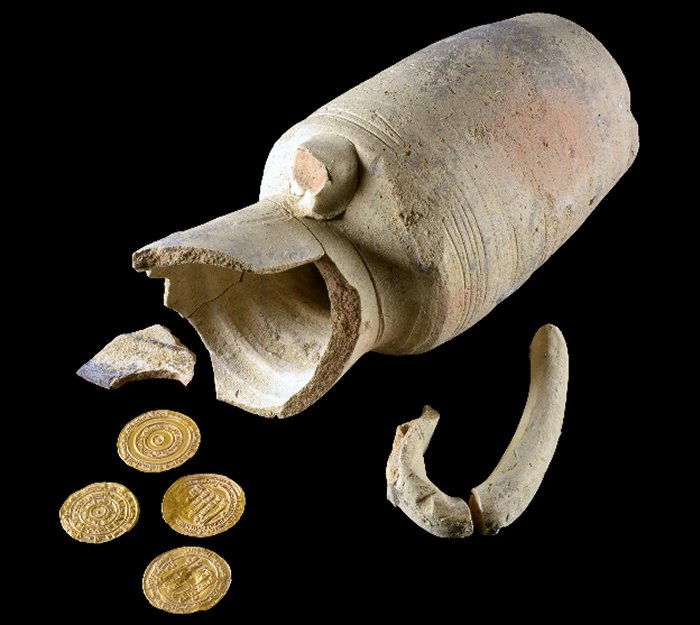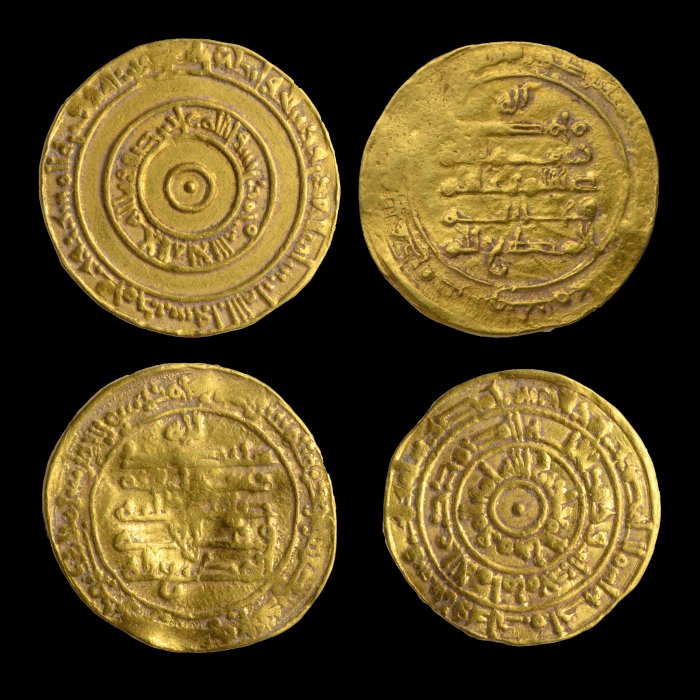Jan Bartek – AncientPages.com – A marvelous juglet containing pure four gold coins has been unearthed in Jerusalem. The coins are still in excellent condition despite being at least 1,050-year-old. Looking through modern eyes the gold coins may seem like a small amount of money, but back in those days, this was a four month’s salary for a common laborer.
Maybe the unearthed juglet was someone’s piggy bank, even if the jar is not shaped like a pig it could have been used to save money.
 Credit: Dafna Gazit, Courtesy of the Israel Antiquities Authority
Credit: Dafna Gazit, Courtesy of the Israel Antiquities Authority
The small pottery jug containing four pure gold coins from over a thousand years ago (dating to the Early Islamic period), was unearthed during archaeological excavations conducted by the Israel Antiquities Authority (IAA), as part of the Jewish Quarter Development Corporation’s plan to build an elevator and make the Western Wall Plaza accessible to visitors coming from the Quarter.
The juglet was found by Israel Antiquities Authority inspector Yevgenia Kapil during preliminary digging at the site last month. Some weeks later, as excavation director David Gellman was examining the finds, he emptied the contents of the juglet.
“To my great surprise,” says Gellman, “together with the soil, four shiny gold coins fell into my hand. This is the first time in my career as an archaeologist that I have discovered gold, and it is tremendously exciting.”
 Credit: Dafna Gazit, Courtesy of the Israel Antiquities Authority
Credit: Dafna Gazit, Courtesy of the Israel Antiquities Authority
According to Israel Antiquities Authority’s coin expert, Dr. Robert Kool, “The coins were in excellent preservation and were immediately identifiable even without cleaning. The coins date to a relatively brief period, from the late 940s to the 970s CE.
This was a time of radical political change, when control over Eretz Israel pᴀssed from the Sunni Abbasid caliphate, whose capital was Baghdad, Iraq, into the hands of its Shiite rivals—the Fatimid dynasty of North Africa, who conquered Egypt, Syria and Eretz Israel in those years.
See also: More Archaeology News
The profile of the coins found in the juglet are a near perfect reflection of the historical events. Two gold dinars were minted in Ramla during the rule of Caliph al-Muti‛ (946–974 CE) and his regional governor, Abu ‛Ali al-Qasim ibn al-Ihshid Unujur (946–961 CE). The other two gold coins were minted in Cairo by the Fatimid rulers al-Mu‘izz (953–975 CE) and his successor, al-‘Aziz (975–996 CE).”
This is the first time in fifty years that a gold cache from the Fatimid period has been discovered in Jerusalem’s Old City. Four dinars was a considerable sum of money for most of the population, who lived under difficult conditions at the time. It was equal to the monthly salary of a minor official, or four months’ salary for a common laborer.
Written by Jan Bartek – AncientPages.com Staff Writer





